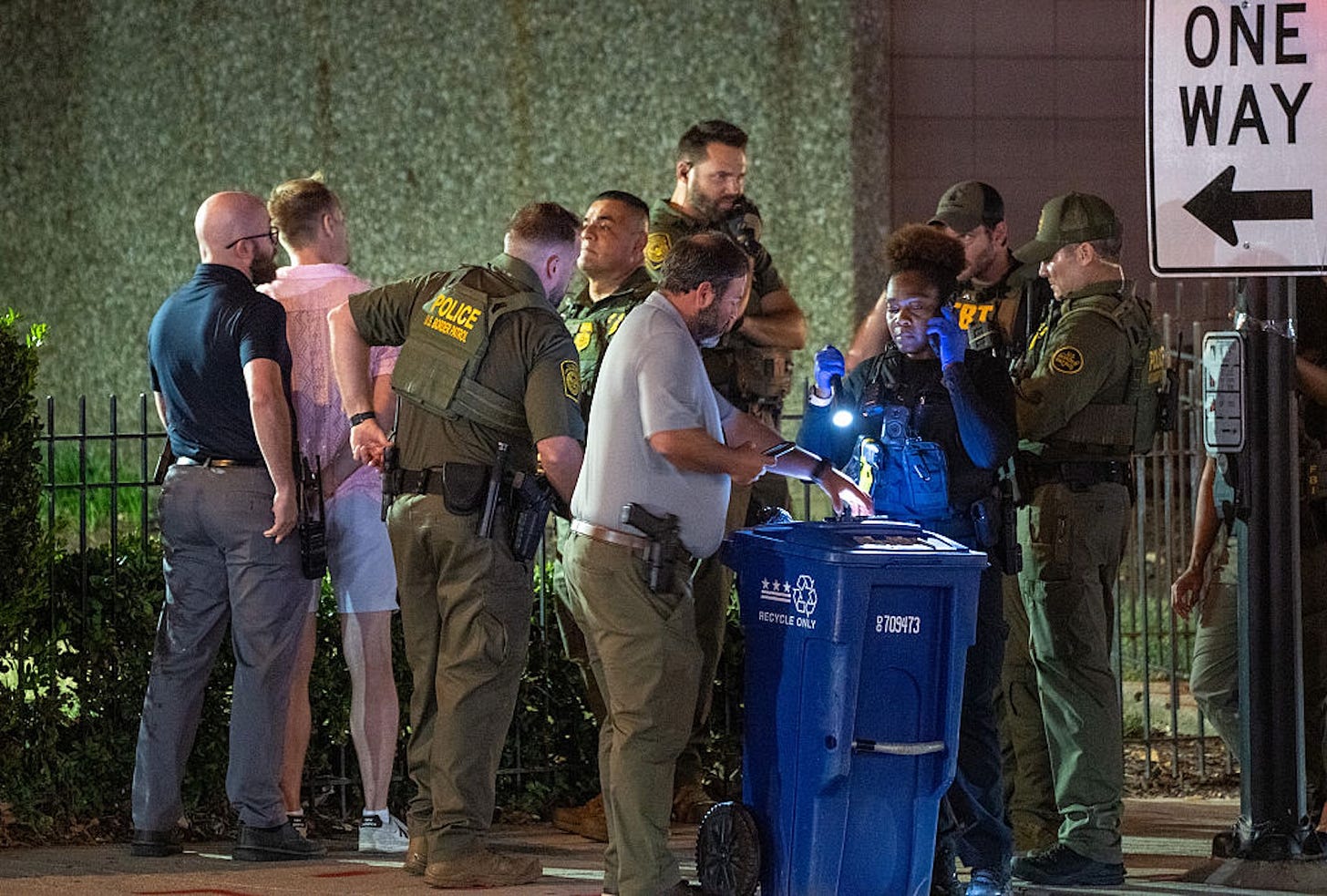This Is How a Sandwich Showed Americans How Much Power They Have
Jury nullification is the justice system's best kept secret. But more people are waking up.
Every so often, a headline-grabbing case reminds us of the unique — and little understood — power wielded by American juries.
Yet, the case of Sean Dunn, the former Department of Justice paralegal who became an overnight viral sensation for hurling a sandwich at a Customs and Border Patrol officer, provides a textbook example of jury nullification in modern times.
The story is straightforward. During an anti-ICE protest in Washington, D.C., Dunn was caught on video shouting at officers, then tossing a sandwich at a federal agent before fleeing the scene.
The episode quickly burned across social media, making Dunn a symbol of resistance for some and an emblem of lawlessness for others.
Legally, there was no ambiguity about Dunn’s actions. The whole event was not only witnessed by a crowd, but also recorded and publicly shared. There’s little doubt that Dunn committed the “crime” as charged—misdemeanor assault, pared down from an initial felony charge.
Had the jury convicted him, he faced the possibility of up to one year behind bars and hefty fines, a daunting consequence for what, at the end of the day, was a food fight with political undertones and extra mayonnaise.
But here’s where the heart of the story lies: despite the evidence, despite the legal clarity, the jury chose not to convict.
They acquitted him in a move that stupefied some commentators but made perfect sense to anyone familiar with the sometimes-forgotten principle of jury nullification.
This is when a jury, recognizing that a defendant technically broke the law, nonetheless refuses to convict because they believe that doing so would result in an unjust punishment or constitute an overreach by the government, as it certainly would have in this case.
Jury nullification is a controversial topic—many judges won’t even allow defense attorneys to openly encourage it, and it isn’t taught in every civics class.
Still, it remains one of the quiet bulwarks citizens possess to push back against laws or prosecutions they perceive as unjust, overly harsh, or simply out of step with society’s sense of right and wrong.
Imagine yourself in the jury box. For a moment, set aside the noise and the politics swirling around the protest. You see clear evidence: a sandwich thrown, a law technically broken.
But you also know that convicting Sean Dunn would mean branding him a criminal and subjecting him to prison time, possibly over a protest that, while rowdy, didn’t lead to bodily injury or lasting harm.
Do you really believe justice is served by putting someone in a cage over a sandwich?
I don’t. And neither did the jury.
This is why jury nullification exists. It’s a way for ordinary people—your neighbors, your coworkers, maybe even you—to inject common sense and compassion into the rigid gears of the justice system.
It’s a safeguard against government overreach, reminding prosecutors, lawmakers, and law enforcement that the letter of the law is not always the spirit of justice. In the end, it is the people who choose how to administer justice.
Critics of jury nullification worry it can lead to chaos or inconsistency, but history tells a different story. Juries have used this power to acquit abolitionists resisting the Fugitive Slave Act, to spare people caught in the crosshairs of Prohibition, and to express society’s evolving standards.
Of course, this practice can also be used for nefarious reasons. In the Jim Crow South, there were some cases in which White jurors acquitted people who carried out racist attacks against Black people.
Yet, can be used to ensure that people’s rights are protected more often.
In Dunn’s case, the jury delivered a message: not every infraction deserves the full weight of the state’s power.
If I had been sitting on Sean Dunn’s jury, I could not, in good conscience, have voted to convict, regardless of the politics surrounding the situation.
The law may have been broken, but the punishment far outweighed the supposed harm. There’s no justice in caging someone for a protest gone viral, no matter how contentious the political debate.
In an era when government power often seems unchecked, it’s vital to remember that the simple act of sitting on a jury still gives regular citizens the final say.
Dunn’s acquittal is a case study in how, sometimes, the law takes a back seat to justice. And that’s exactly how the system is meant to work.


